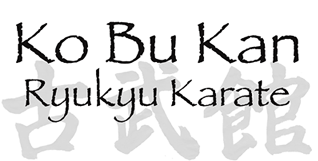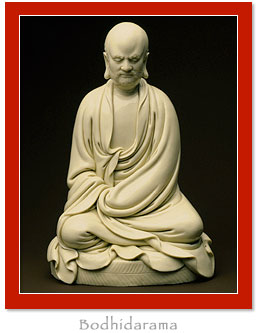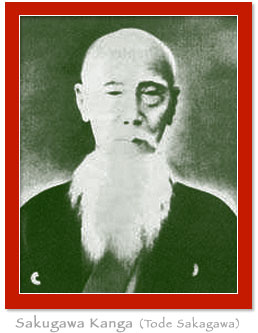
Home............Contact Us / Join Us............Student Training Information............Guiding Principles, Rules and Etiquette
About Our School..........The Instructors..........History of the Art.........Competition Results.........About Pressure Points

In 1756 a Chinese military envoy of the Ming Dynasty named ‘Kusanku’ (chin.: gongxianjug, ![]() ) moved to the Ryukyu islands as part of the ‘36 families’ in the village of Kanemura, near the city of Naha, that migrated at that time. Kusanku was famous for his Martial Arts abilities and is believed to be either a Shaolin monk or had been trained by one.
) moved to the Ryukyu islands as part of the ‘36 families’ in the village of Kanemura, near the city of Naha, that migrated at that time. Kusanku was famous for his Martial Arts abilities and is believed to be either a Shaolin monk or had been trained by one.
One of Kusanku’s students was Sakugawa Kanga (1733 - 1815) of the Shuri Region. Sakugawa trained with Kusanku for six years and developed his techniques into the Kata called ‘Kusanku.’ This Kata is part of our training syllabus. Sakugawa combined the styles of the Shuri region (Shuri-Te) with the teachings of the Shaolin master to develop what we now call Ryukyu Kempo and Karate. Sakugawa is credited as being the first true Karate practitioner, it is the lineages from him throughout history that have developed into the Ryukyu and Japanese Martial Arts we see today. After training with Kusanku, Sakagawa also became known as Tode Sakagawa, Tode referring to ‘Chinese Kempo.’
During the 18th and 19th century, the Uhugushiku family were commissioned to be the personal bodyguards to the
Ryukyu King at the Shuri castle.
After retirement, the last member of the family decided to be the first to take on a student outside of the family,
this person was Taika Seiyu Oyata.
Taika Seiyu Oyata, began his martial arts training at a very early age. He was exposed to the Okinawan form of sumo through his father, Kana Oyata. During World War II he received instruction in Iaido, Kendo, and Judo. After the war he began training with
Uhugushiku-no-tan-mei, a retired officer of the Okinawan government.
The Uhugushiku family had a reputation for its skill in martial arts and served the Okinawan ruling class for many centuries. Uhugushiku was known as a kakurei bushi (hidden warrior) and taught neither outside of family lines nor those without a direct connection to the warrior class of Okinawa.
Uhugushiku introduced Taika Oyata to Wakinaguri, an elderly gentleman who was a descendant of Chinese emissaries sent to Okinawa when it was a tributary state of China. These two gentlemen began to teach Taika Oyata the ancient ways of Okinawan and Chinese martial arts. During this time Karate was taught openly as a public art. However, what Uhugushiku and Wakinaguri taught were family arts handed down through generations. Neither Uhugushiku nor Wakinaguri had descendants to whom they could pass down their art, and therefore Taika Oyata became the inheritor of this knowledge.
After Uhugushiku and Wakinaguri died, Taika Oyata sought other karate masters to continue his training. He joined several research groups (kenkyukai) and trained directly with Shigeru Nakamura, founder of Okinawan Kenpo. Under Nakamura-sensei, Taika Oyata learned the 12 basic empty hand Kata that are practiced in our syllabus today.
It is the training Taika Oyata did with Uhugushiku and Wakinaguri which gives us an art only practiced by the Ryukyu Samurai and not publicly taught. It is an honour and a priviledge to be learning this version of the art. ........
........

![]()